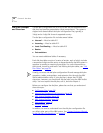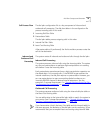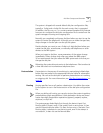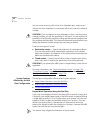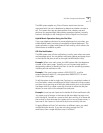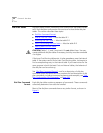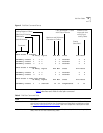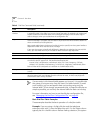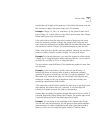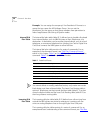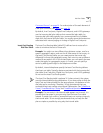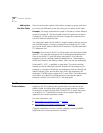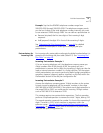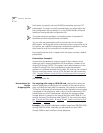
36 CHAPTER 2: DIAL PLAN
If a new entry in the Internal table appears not to work, it is possible that
the system is using an entry from the Least Cost table instead. To avoid
such conflicts, you can accomplish least cost routing using only the
Internal table. 3Com strongly recommends that, to keep the dial plan as
simple as possible, you use only the Internal table for least cost routing.
For more information on how to use the dial plan configuration file,
see “
Managing the Dial Plan Configuration File” on page 44.
Basic Dial Plan Table Examples
These examples describe the basic operation of a dial plan table.
Example: If you are using a 4-digit dial plan and the telephone
extensions start with 2, then the table entry with 2 in the Digits column
typically has 4 in the Min column. Before making a decision, the system
Table Entry ID
Number
Table entry number (a unique number for each entry in the table). These numbers are usually
in ascending order in the table, but you can change the order. For example, you might want
to place a new item near other items of the same type (that begin with the same digit) in
order to help you when you troubleshoot the configuration file.
Digits One or more digits that begin the dial sequence. Either single or multiple entries can start
with the same digit. The system uses this field in conjunction with Min and Max to determine
when to make the call routing decision.
Most sample tables have a single entry for digit 0 (zero) to specify how the system handles a
telephone number which has zero as the first digit.
If you want the system to handle calls differently, depending on whether they start with 90
or 91, you must have one entry in the table for each of these 2-digit sequences.
Min Minimum number of digits that the system collects before routing the call.
Max Maximum number of digits the system collects before routing a call.
Class Class of Service (CoS). The system uses this information to decide whether a caller is allowed
to make this specific type of call. The possible classifications are:
Internal, Local, LongDistance, International, WAN, Toll- Free, Emergency, COCode,
Wireless, Toll, Operator, AlternateLong, TrunkToTrunk, Diagnostics, NotAllowed, Other
Each of these values corresponds to a selection in the NBX NetSet utility.
Priority Priority number. This field is not used at this time, but must be present and should always be
0 (zero).
Route Route number. This identifies an entry in the Routes section of the dial plan. Zero is a typical
value for internal calls, and indicates that this call uses no route, in which case, digits are
transmitted as soon as they are dialed.
Table 6 Dial Plan Command Fields (continued)
Field Description



